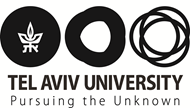Research Fields - Physical Electronics
Electromagnetism appears in many disciplines and technologies. Electromagnetic fields and waves are used to transmit information in communication systems, and for applications such as simulation, remote sensing, energy transfer, navigation, localization and radar systems, and more. Therefore, electromagnetics serves as the foundation for diverse applications found in all modern engineering fields, in research and development, both within the classical disciplines of electrical engineering such as communications, integrated circuits, and photonics, and in cutting-edge fields such as medical engineering, geophysics, quantum optics, and more.
This research branch with modeling and methods of analysis of electromagnetic systems in all frequency ranges, from radio waves to light and ultraviolet, as well as the design and implementation of microwave systems, starting at the source level, transmission systems and components, wave propagation and dispersion, and the interaction between the field and the material.
The courses in this track provide important and basic training for microwave and antenna engineers, communication system developers, radar and electro-optics. They provide a foundation for modern research branches such as metamaterials, metasurfaces, fields and waves in complex and time-varying systems, nano-antennas, advanced sensing, and many more.
| Researcher | Website/ Laboratory Site |
Research Topics |
|---|---|---|
| Prof. Amir Boag | Website | |
| Prof. Reuven (Raymond) Boxman (Emeritus) | Website | |
| Prof. Pavel Ginzburg | Website | Biophotonics, Metamaterials, Optical Forces, Fluorescent Materials, Nanolasers Radiophysics, Automotive radars, Drone monitoring, Radar deception, Antennas, RFID, IoT |
| Prof. Eli Jerby | Website | Localized microwave-heating (LMH) theory and phenomena, thermal-runaway instabilities; plasma ejection by LMH, fireballs and plasmoids, dusty plasma and nano-powder production; 3D-printing of metal parts by LMH; drilling and cutting by LMH (the “microwave drill”); LMH of basalt (lava and ball-lightning ejection by “miniature volcanoes”); metal-powder combustion by LMH, thermite interactions in air and underwater (the bubble-marble effect); microwave generation (by solid-state and vacuum electronics). |
| Prof. Ehud Heyman | Website | |
| Dr. Yakir Hadad | Website | Electrodynamics and wave theory, analytical methods, artificial materials with applications in RF and optics, hybrid-physics waves in complex structures, nonlinear dynamics, plasmonics and nanophotonics |
| Prof. Shimshon Frankenthal (Emeritus) | Plasma, magneto-hydrodynamics, radiation transfer and particles, spreading in random medium, underwater acoustics | |
| Prof. Raphael Kastner (Emeritus) | Website | Time and frequency domain methods in electromagnetics, absorbing boundary conditions, antenna and array design, antenna theory, meta-surfaces |
| Prof. Ben Zion Steinberg | Website | Theoretical Electromagnetics, analytical and numerical methods, propagation and scattering in complex media, nano-structures and crystals |
| Prof. Eran Socher | Website | RFIC, mm-wave and THz CMOS, high speed communication, mm-wave and THz imaging and sensing, RF-interconnect, nano-scale CMOS circuit design |
| Dr. Itai Epstein | Website |
Two-dimensional materials, light-matter interaction at atomic scales, light interaction with phonons plasmons and excitons, van der Waals heterostructures, optoelectronic devices at atomic scales, photonics, surface plasmons, infrared optical devices. |
| Prof. Avraham Gover | Website | Quantum Electronics, Electron interaction with light and matter, Free electron lasers (FEL), THz Radiation, Electron Beam Physics, Electromagnetism |

